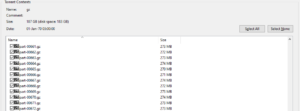Personal data of 700 million LinkedIn users, over 90% of the LinkedIn database, scraped by hackers back in June, was leaked over the internet this week.
Hackers were using private Telegram channels to share data collected in the form of torrent files containing archived information of 187 GB. The files were analyzed and confirmed to be authentic with data including LinkedIn profile URLs, names, IDs, user email addresses, and locations.
Image Credits: The Record
Although most of the data leaked are already accessible for the public on user LinkedIn profiles and poses no threat, the data leak also included some email addresses which aren’t usually viewable to the public on LinkedIn.
These email addresses are a gold mine for hackers as they are linked to users’ real lives. This can allow them to target high profiles and employees in organizations’ finance and security departments, which are considered sensitive.
Image Credits: The Record
Thankfully, the major leak does not include sensitive email addresses like these, thereby concluding that the vast amount of data breached by the hackers is completely fruitless.
LinkedIn deferred its comment from its June 2021 statement when the data breach occurred. Back then, LinkedIn said that user data was scraped off LinkedIn and various other sites.
Honestly, public data scraped off LinkedIn and sensitive email addresses collected from other sites shouldn’t be blamed entirely on the company. Likewise, it cannot be blamed for hackers collecting public information to power its service.
Generally, public data scraping incidents are increasing rapidly, including scrapes of Facebook, Instagram, Clubhouse, and more. A data breach hit even the Tokyo Olympics 2020.
And even though the data is all public information and not sensitive in any way, its collection can be sought for various other purposes, including building an OSINT database. This way, the future threat actors are enriched with data from multiple sources, so they understand what to target in the future.


